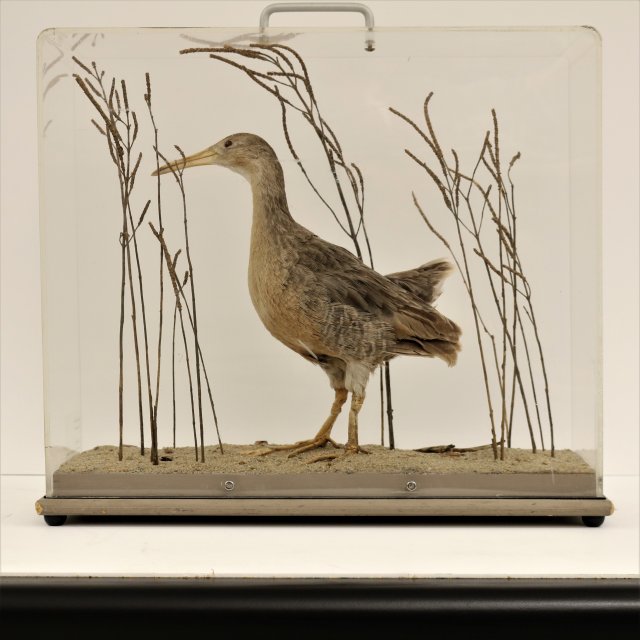week 3: Kendall-Frost marsh
We started off our week 3 field trip to Kendall Frost marsh by trying to guess the name of this mysterious specimen from the San Diego Natural History Museum's Nature to You loan program.

It was a state and federally endangered Ridgway's Rail, and is the focus of intense conservation efforts, including habitat restoration projects and the release of captive-raised individuals. Here is a photo I took at the Tijuana estuary of several rails being released.

I managed to misidentify a Reddish Egret as a Little Blue Heron during our kayak trip, which shows the perils of birding without binoculars. In my defense, I still think the first one we saw was a Little Blue Heron, but I agree with the identifiers who said that this one was a Reddish Egret. I love that dozens of people on iNaturalist are willing to review all our observations and double check the accuracy of our species!
Here is a handy guide to the two species.
We talked a bit on the field trip about the increasing abiotic stress that salt marsh plants experience as they move down in elevation. Fewer species are able to survived the challenging environment of being inundated in ocean water. In the rocky intertidal, we saw the opposite pattern, with organisms experiencing the most stress as they move higher in elevation. As Dr. Zedler points out in her great ebook on wetlands, this is because different species experience stress in different ways. While it is stressful for terrestrial plants to be inundated, it is stressful for marine animals to be exposed to air.
We didn't talk nearly enough about Dr. Purer, a salt marsh ecologist who documented San Diego salt marshes in the 1930s-40s, but everyone in the class should be familiar with her from the Zedler reading. You can also read her salt marsh paper yourself. I am inspired by her work, mostly because she thought to document the state of salt marshes, coastal dunes, and vernal pools in San Diego County at a time when they were undervalued. She watched Mission Bay turn from vast thriving wetlands to a recreational park. Efforts are currently underway to expand the salt marsh at Kendall-Frost through the ReWild project. Although this would still only restore a portion of what was lost, this project would restore much-needed habitat in Mission Bay.





